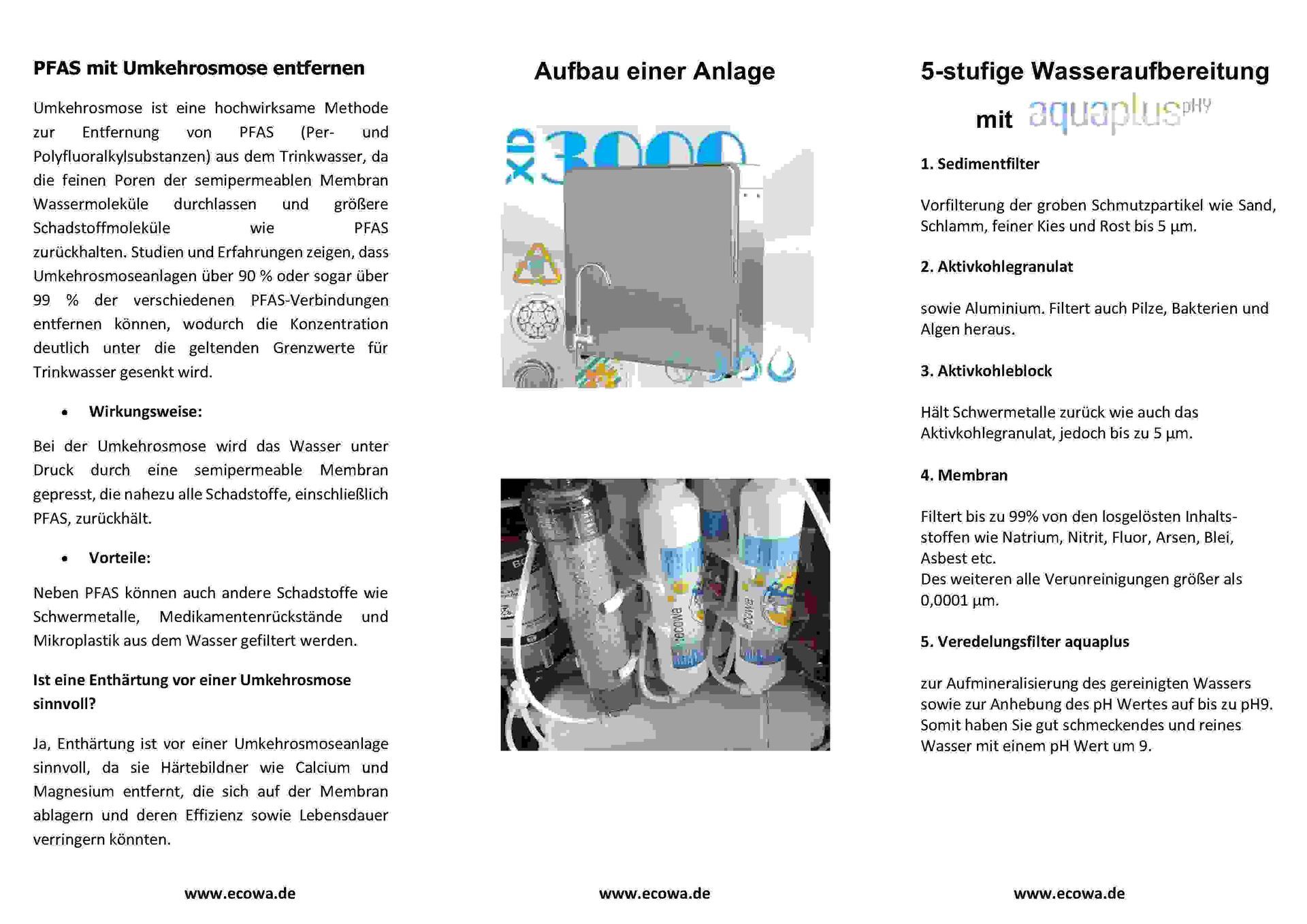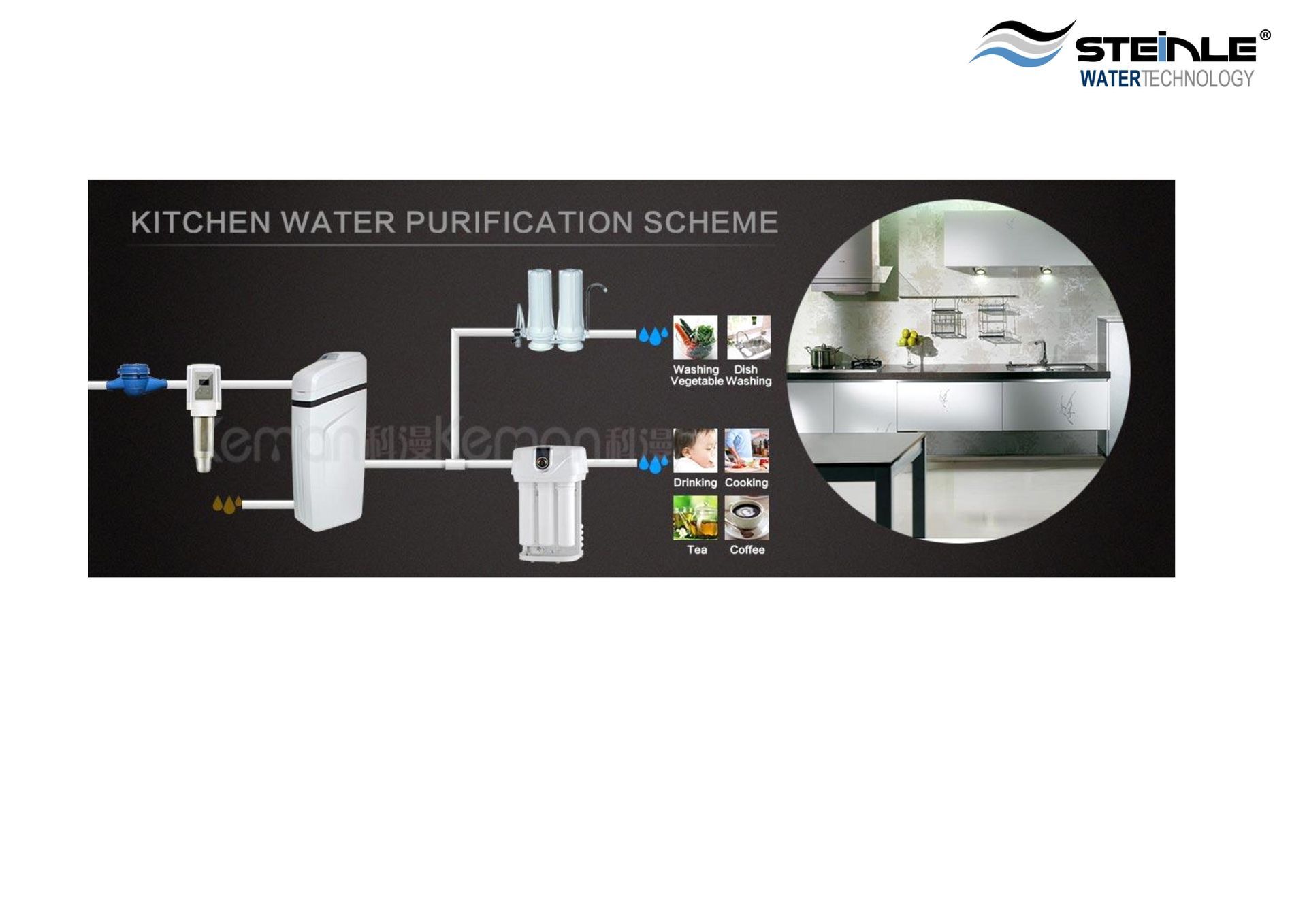More information about reverse osmosis
Softening and reverse osmosis
Reverse osmosis is an effective method for removing PFAS from water because its fine membrane traps the contaminants. Additional activated carbon filtration is recommended because it adsorbs PFAS and improves the overall efficiency of the system. While simple water softening removes hardness-forming substances from water, it is not suitable for PFAS removal.
Reverse osmosis and PFAS removal
How it works:
In reverse osmosis, water is forced under pressure through a semi-permeable membrane that removes almost all contaminants, including PFAS
.
Efficiency:
Reverse osmosis systems can achieve very high PFAS removal rates, often over 99%.
Advantages:
In addition to PFAS, other pollutants such as heavy metals, drug residues and microplastics can also be filtered out of the water.
Why softening is not enough
Purpose of softening:
Water softeners remove limescale and other minerals that make water hard.
No PFAS filter:
They are not designed to filter PFAS molecules from water because they have a different chemical nature than hardness-forming substances.
Combined solution
Reverse osmosis with activated carbon:
For optimal PFAS removal, ecowa combines a reverse osmosis system with activated carbon filtration.
Regular filter changes:
To ensure the effectiveness of the filters, regular replacement of all filter elements, including the activated carbon and membrane, is required. To extend the lifespan of the reverse osmosis filters, we recommend installing a water softener upstream of the system.
Important instructions
Wastewater treatment:
When using reverse osmosis systems in wastewater applications, pretreatment of the wastewater is often necessary.
Sustainability:
Using a reverse osmosis system in the home can be more sustainable than buying bottled water.









